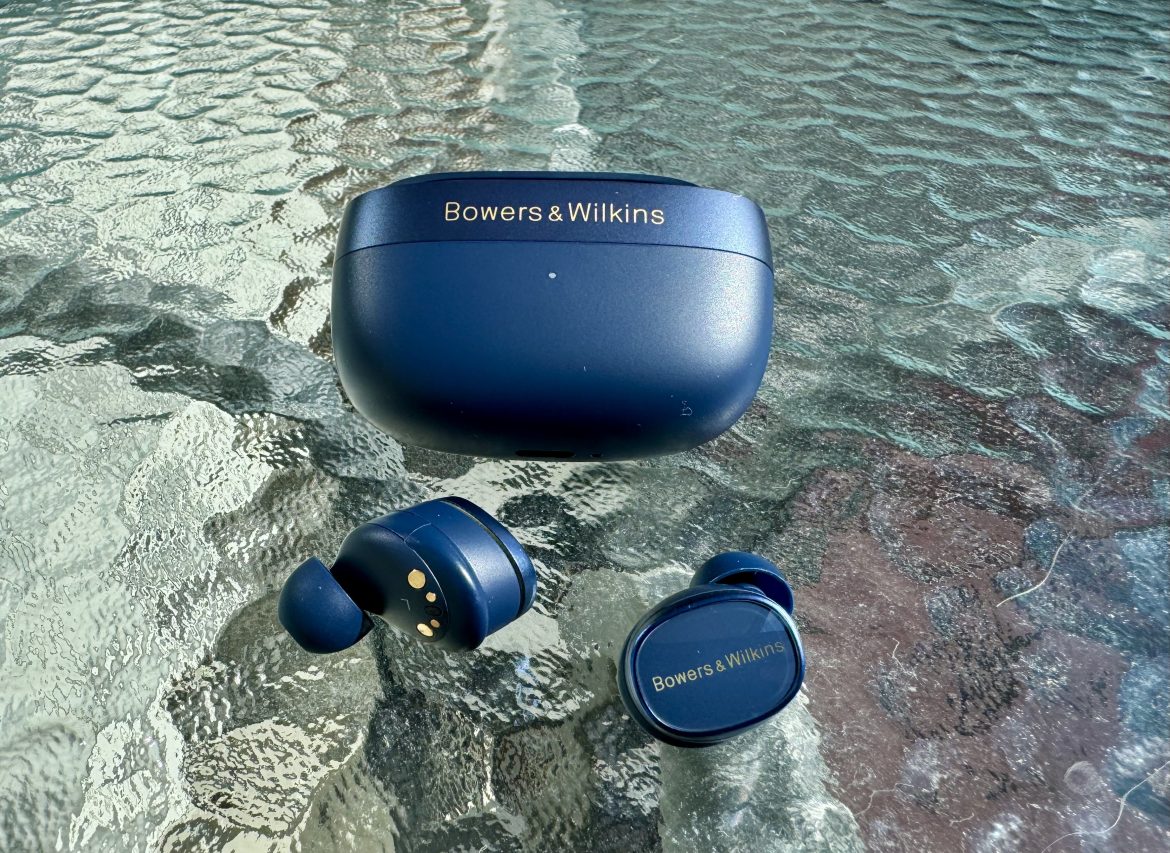TL;DR
Bowers & Wilkins' new Pi8 true wireless earbuds borrow heavily from their acclaimed PX8 headphones, offering a premium, luxurious design and refined audio performance. While ANC is competent, it lacks granular control. Battery life is decent at around 20 hours total, and the unique Bluetooth transmitter case is a handy feature. Microphone quality is a significant improvement. Sonically, they deliver exceptional confidence and refinement, especially with well-mixed tracks, though hard rock might leave you wanting a bit more punch. They are very close to the excellent Technics EAH-AZ80, with the Pi8 excelling in resolution and dynamics for many genres, but the Technics may edge them out in harder-hitting genres. Ultimately, the Pi8 offers a more stylish, high-end experience, but the price premium over competitors like Technics is significant. Want to know if the extra cost for B&W's signature style and refined sound is worth it? Read the full review!
Bowers & Wilkins introduces the latest generation of their true wireless earbuds, incorporating technology and insights derived from the acclaimed PX8 over-ear headphones. We previously reviewed and appreciated the Bowers & Wilkins Pi7 – despite some criticisms in the trade press regarding it and its Gen 2 successor (which we did not test). Their recent PX7 2Se over-ear headphones are currently a benchmark reference for the Senses editorial team. A key question arises: can the Pi8 surpass the Technics EAH-AZ80, particularly given its premium price point?
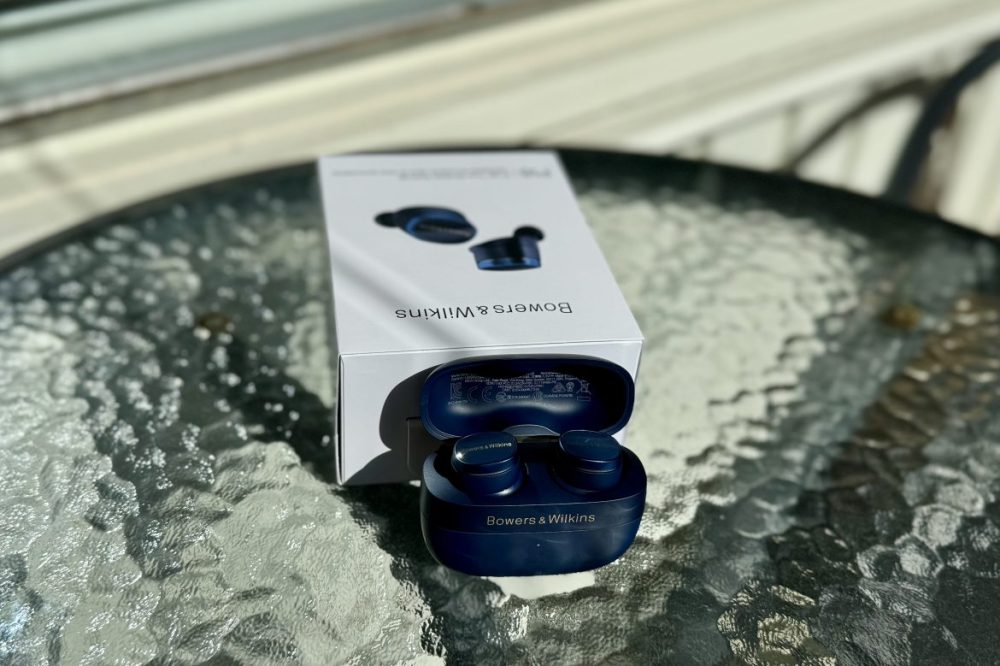
Upon unboxing the Pi8, the immediate impression is one of premium quality and luxurious design. While the Pi7 was certainly not lacking, the Pi8 exhibits a superior finish and attention to detail in its construction, conveying a truly high-end feel. From the stylish charging case to the piano-lacquered surface of the earbuds, subtly displaying the Bowers & Wilkins name in an almost golden hue, the attention to detail is evident. Although the case is prone to attracting fingerprints, it has proven to be resistant to scratches and wear during our weeks of testing. Initially, we encountered some difficulty pairing the earbuds correctly, with only one earbud producing sound. The solution involved placing both earbuds in the ears and pressing one, after which they paired correctly. While a minor issue, it was unexpected.
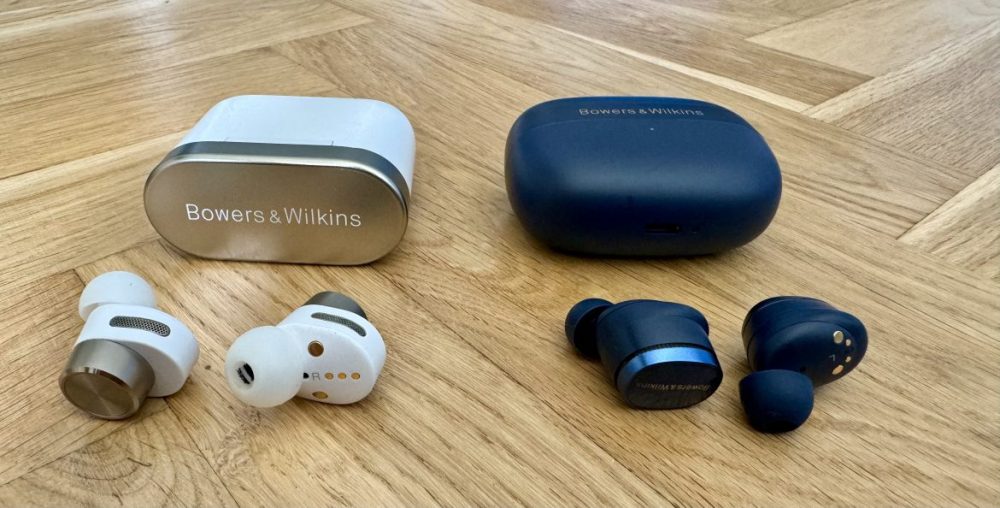
The B&W app offers three ANC (Active Noise Cancellation) modes: on, off, and passthrough. Unlike some competitors, such as Technics, the Pi8 does not allow for granular adjustment of the ANC level. The ANC performance itself is competent, effectively mitigating most distracting noises encountered during testing on trains and in vehicles. Furthermore, the earbuds were effective at blocking out noise from nearby road construction, allowing for distraction-free listening while walking past the site.
The earbuds offer a comfortable and streamlined fit, with a reduced protrusion compared to the previous generation. They provide a secure fit that is suitable for activities such as cycling, running, and moderate headbanging. While not the absolute best-fitting earbuds we have tested, they perform well in this regard. Comfort levels are good, though not class-leading. We recommend using the largest ear tips provided. It was somewhat surprising that the packaging lacks a dedicated storage solution for the unused M-sized tips after switching to the L-sized tips. Although not a critical issue, it represents a minor oversight in an otherwise meticulously designed product.

The charging case now supports wireless charging and provides approximately 14 hours of capacity. Combined with the earbuds’ 6-hour battery life, this yields a total of around 20 hours, which should suffice for most users. While this is significantly less than the JBL Flex Live 3‘s impressive 50 hours, the Pi8 prioritizes high-fidelity audio over features geared towards sports and activity. In terms of hi-fi capabilities, the case retains the ability to function as a Bluetooth transmitter, enabling compatibility with Bluetooth-limited devices via the included USB-to-3.5mm cable. B&W has been a pioneer in this feature, and while useful, it is now being adopted by other brands such as Jabra (which is exiting the consumer market). British What HIFI has evaluated this function on an airplane during a long-haul flight, reporting positive results (although an additional adapter for the plane’s entertainment system was required).
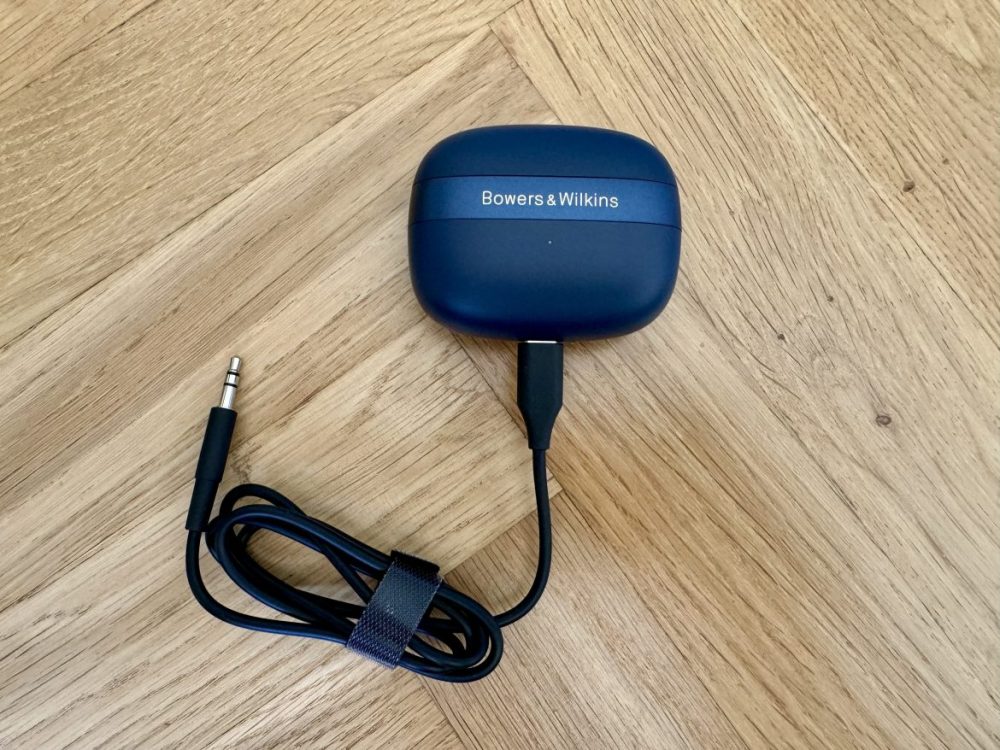
The microphone performance of the previous model received some criticism. B&W states that this has been improved, and our testing confirms that the microphone performs well, provided the earbuds are correctly positioned with the “Bowers & Wilkins” logo aligned towards the mouth. While proper alignment can be difficult to ascertain without a mirror, test calls yielded positive feedback, with recipients reporting excellent clarity (“like you’re here!” one person commented). As long as excessive wind or ambient noise is avoided, the Pi8 is suitable for mobile calls, a feature that is not universally available or well-implemented in all TWS earbuds.
B&W Pi8 Technology
Internally, the B&W Pi8 features Bluetooth 5.4, a relatively rare implementation at present. This updated Bluetooth version promises a stable signal up to 10 meters. We experienced generally solid connectivity during our testing, with only occasional brief audio dropouts during music playback. The earbuds also support multi-point pairing for simultaneous connection to multiple devices, a convenient feature. As we are among the first to evaluate this model, we anticipate that future firmware updates will address any minor connectivity issues. Bowers & Wilkins has incorporated a new Qualcomm chip, providing support for aptX Adaptive up to 24-bit/96kHz and aptX Lossless. This is a valuable addition for Android users with access to lossless music. However, even with SBC on an Apple iPhone, the strength of the company’s proprietary DAC is evident, playing a significant role in audio processing.

The earbuds are IP54-rated, signifying resistance to moisture and dust, but not full waterproofing. They can withstand sweat during workouts, but are not recommended for use in heavy rain or submersion. Given their value, we would generally advise against using these earbuds for intense workouts, opting instead for dedicated sports earbuds.
The Pi8 incorporates 12mm drivers, which contribute significantly to its audio reproduction capabilities, discussed in detail below. The carbon-based diaphragm material is reportedly similar to that used in B&W’s award-winning PX8 headphones.
The earbuds feature touch controls and utilize a wear sensor that automatically pauses and resumes music playback when the earbuds are removed and reinserted. The B&W app includes an EQ for audio customization, as well as a TrueSound mode designed to deliver “optimal” and undistorted sound (disabling the EQ). The app also allows users to customize the functions assigned to different touch gestures.
Bowers & Wilkins Pi8 Sound Quality
We now turn to the crucial aspect of audio quality. How good does the B&W Pi8 sound, especially considering its premium price (approximately 4,500 SEK at the time of writing)?
We initiated our evaluation using a curated selection of reference tracks. Similar to the PX7 2Se, the B&W Pi8 excels with well-mixed recordings. Singer-songwriter pieces, such as Katherine Crowe‘s cover of Damien Rice’s 9 Crimes, evoke a strong emotional response. The nuances in her vocal vibrato and subtle mouth sounds are reproduced with remarkable fidelity. Similarly, well-produced pop tracks, such as Gyllene Tider‘s underrated Flickan i en Cole Porter, sound remarkably present and powerful. Classical and instrumental music, such as Tchaikovsky‘s ballet Swan Lake and Thomas Bergersen‘s Strength of a Thousand Men, are rendered with appropriate grandeur and nuance. While no genre sounded inherently poor, hard rock proved to be a relative weakness. Disturbed‘s You’re Mine has ample energy, but lacks some of the warmth and impact we desire. Even more mainstream hard rock artists like Lordi and Alice Cooper sound good, but would benefit from improved low-end response.
In a direct comparison against the reigning champion, the Technics EAH-AZ80, the results were very close, almost a photo finish in some respects. The B&W Pi8 demonstrated a slight advantage in terms of resolution and dynamics in several genres, but the difference was subtle. However, we believe the AZ80 outperformed the Pi8 in the hard rock and hip-hop genres. Ultimately, the ideal choice depends on the user’s primary music preferences. The Technics AZ80 remains an extremely capable pair of headphones and is currently available for approximately 3,300 SEK, a 1,200 SEK saving compared to the B&W Pi8. Based purely on sound quality, we do not believe that the price difference is fully justified. On the other hand, the Pi8 exudes a more luxurious and stylish aesthetic, both in its design and packaging, offering a more “high-end” experience compared to the more understated AZ80.
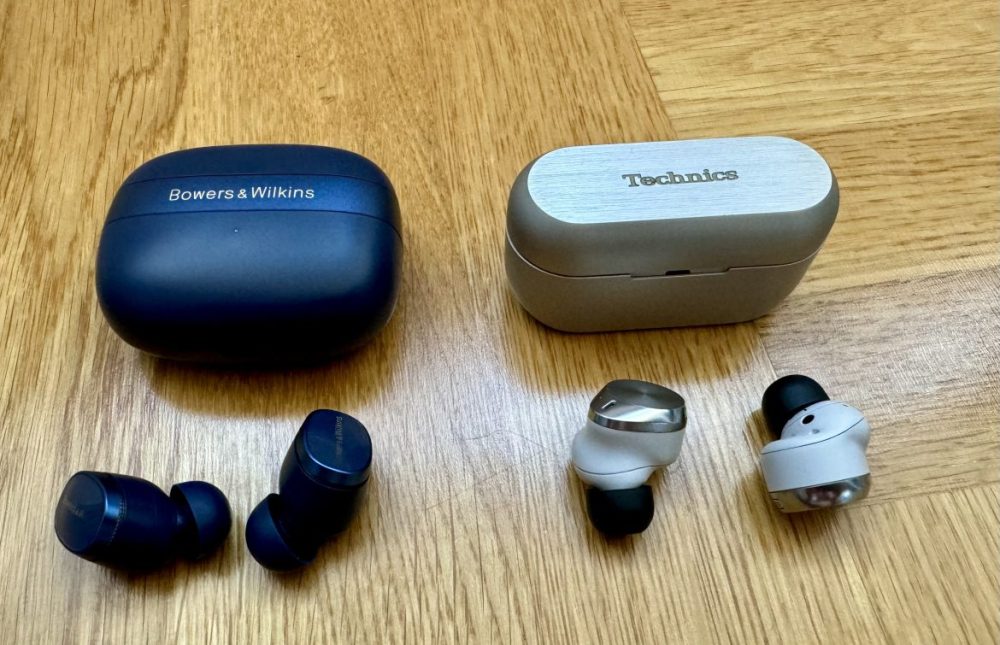
Summary: Bowers & Wilkins Pi8
The B&W Pi8 excels in numerous areas. It delivers audio with exceptional confidence and refinement, while conveying a sense of luxury and quality reminiscent of high-end gadgets from the Hi-Fi world or Apple at its best. Performance is top-tier, although it does not represent a vast improvement over our existing reference, the AZ80. Instead, the differences are marginal, representing subtle enhancements in overall sound quality combined with a highly appealing design. Without a direct A-B comparison, it would be difficult to decisively identify a winner or even an earbud with a clear advantage.
For users seeking the very best in sound and style, and who have the budget to invest a little extra, the B&W Pi8 is an excellent choice. However, for 1,200-1,500 SEK less, competing headphones from brands like Technics and Sony offer comparable sound quality and may even surpass the Pi8 in areas such as ANC performance and suitability for certain music genres.
Ultimately, if the most stylish design and arguably the most refined sound are paramount, the choice is clear: the B&W Pi8 will become a new reference model for our reviews.
Bowers & Wilkins provided review units for this evaluation. Providing review materials does not influence our editorial process. We maintain independence, with a focus on our readers and consumers.
